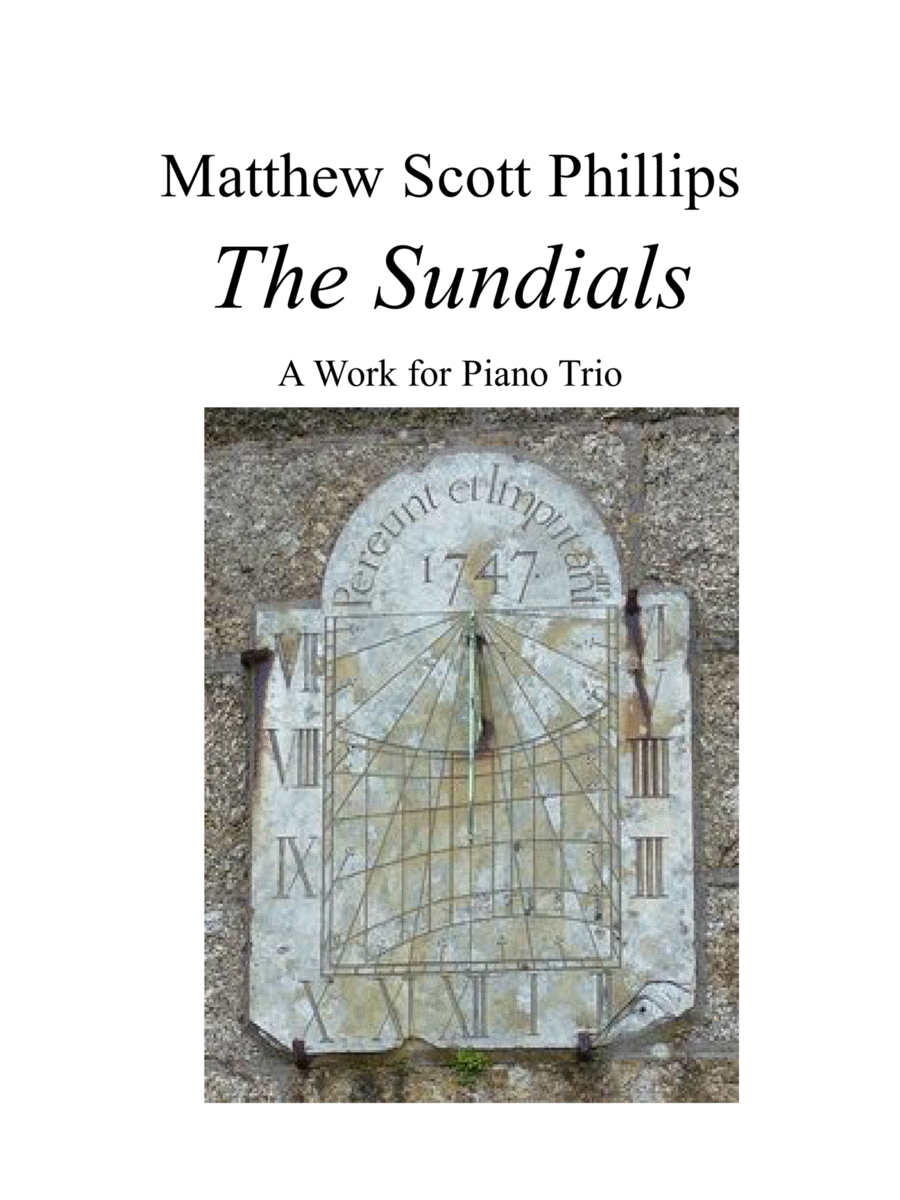Piano Trio,String Ensemble - Digital Download SKU: A0.1004152 Composed by Matthew Scott Phillips. Contemporary. Score and parts. 98 pages. Matthew Scott Phillips #5800833. Published by Matthew Scott Phillips (A0.1004152). Throughout the centuries, civilizations have used sundials to tell time. This instrument consists of a gnomon (Greek for knower), a long pole or incline, whose shadow is cast onto a flat stone or metal plate, that either lies on the ground or is erected onto a wall. This plate is marked with the hours of the day, and the gnomon's shadow passes over the marks. More than just an ancient timepiece, these instruments are doorways to the eternal past, and prophets of the eternal future. They bare witness to the infinite fleeting-ness of the lives of human beings. Unlike a modern watch or digital clock, in which every second enjoys its own momentary significance, the hours as marked by the sundial flow into one another in a continuous stream, that is ultimately timeless. The final hour of any mortal creature is, in this way, no more significant than the first, and all our hours seem insignificant in the context of the cosmos' grandness. Etched upon a great many sundials, in Greek, Latin, English, German, or French, is a motto designed to inspire human beings to consider these truths. Why so many sundial makers felt the need to inscribe on their creations their own philosophies and musings is unclear. Yet, each of these mottos seems contrived to express the contemplations of time and eternity so integral to the sundials' existence. Mottos such as umbra sumus (we amount to shadow) often hold multiple meanings. The we referred to can be the hours, which seem extant only because of the shadow passing over them. Or it can refer to the ephemeral nature of our lives, which on the grand calendar of eternity are so short as to be nothing. Or perhaps it warns that time itself is no more than an illusion; a shadow. Whether they are existential, humorous (I only count the sunny hours), or offer advice (use the hours, don't count them), these mottos are intended to give us pause: to compel us to look for a moment, not at the fleeting significance of our mundane lives, ticked away as they are in tiny hours, but to consider the eternal time that lies beyond us, and to therefore be briefly in contact with it. This composition, approximately an hour long and written for piano trio (Piano, Violin, and Cello), intends as its goal the same purpose as the mottos that inspired it. To transport those who listen to it (listen not merely hear) away from the earthly, and into the cosmic. Each movement is named after a different motto. The mottos, their English translations and the locations of the sundials that bare (or once bore) them is listed at the front. This is one hour, hopefully, that will not simply fade away, but rather will be one spent in the company of the eternal. .
